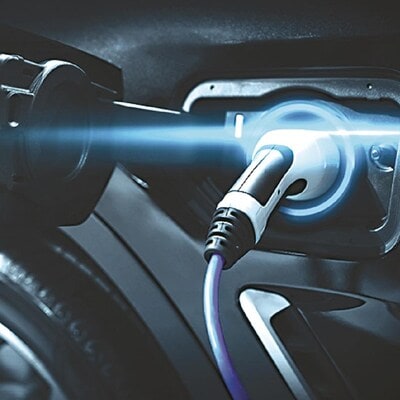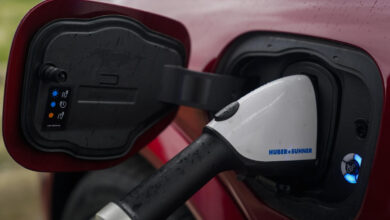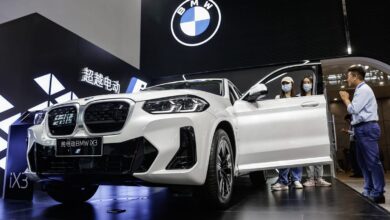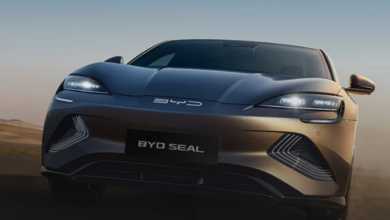Why future of cars does not look electrified | Expert Views

The Economist magazine, which calls itself a newspaper, is a venerable old institution. Successful people are said to read it. The not-so-successful ones, such as your columnist, read it only occasionally.
One such random reading threw up a headline from the economist.com website that struck a chord.
Click here to follow our WhatsApp channel
“The future lies with electric vehicles,” said a special report dated April 14, 2023.
Some people in India do not like the kind of coverage The Economist does of this country’s economy and politics, especially when the two – economy and politics — are spoken of in the same breath. But this soothsaying about automobiles would have warmed many hearts in India.
Making a jump from internal combustion engines (ICE) to electric vehicles is the kind of romantic prospect that would appeal to a country that jumped from a shortage of landline phones to an abundance of smartphones. It could be described by using the “four-letter word… starts with s” that Rahul Dravid famously hesitated to use while describing India’s bowling attack last year. A while ago, there was also a buzz that India would ban registration of ICE cars in a few years, probably by the end of this decade.
Electric two-wheelers appear to be on the road to living up to that word. They had their highest registration figure in March — more than 138,000 — compared to the previous monthly high of 103,000 in May 2023. March registrations were nearly double of February. It was also the month when e2Ws accounted for 9 per cent of all two-wheelers. In scooters alone (e-motorcycles are few), electric penetration is said to have reached 28 per cent in March.
Though April has been a dampener, mainly because of an end to government subsidies, e2Ws have a strong use case. Their prices have been falling, they are easier to charge, there are several models already in the market with more in the pipeline, and electric two-wheelers are great for short runs, such as e-commerce deliveries and other shorter commutes.
Cars go further (anecdotally, intercity road trips have been on the rise in India with the improvement in the highway network). They require a bigger battery, which is costlier and takes longer to charge. Several coveted electric cars still cost a bomb (though some models of Tata and MG cost a lot less now).
Electric works well in the luxury car segment, where the price is less of a factor than in the mass market, where buyers typically have more than one car, and there is an ICE car in the garage for longer travels or whenever its electric sibling — the “statement” piece — needs to get its battery charged.
But, when it comes to electric cars, the electric dream is turning out to be a six-letter word starting with f, ending with y, and having antas in between. Electric cars, despite a goods and services tax (GST) rate of 5 per cent, are a shade above 2 per cent of all cars sold.
By comparison, hybrid cars attract 28 per cent GST, but the cess takes the total tax incidence to 43 per cent, unless it is a small car. ICE cars attract the same GST, but the cess takes the total to up to 50 per cent, varying according to the size of the body and engine.
And still, some projections say cumulative passenger vehicle sales in India between FY23 and FY30 will be 42 million, of which EVs will be about 6 million, leaving a large number of “the other kind”. (Reminder: By 2030, registration of ICE cars was tipped to end in India).
The “other kind” includes hybrids, which combine a battery with an ICE, usually petrol, are cheaper than comparable electric cars, and suffer no range anxiety while dramatically boosting the overall fuel efficiency. They have seen a surge in India, not least because Toyota decided to introduce its hybrid technology, which became famous when Hollywood stars chose to drive the Prius in the early part of this century, in more affordable cars sold under its own brand as well as by its partner, Maruti Suzuki, the country’s largest carmaker.
Curiously, a report in January by HSBC Global Research struck at the root of the EV argument. “Hybrids are much less polluting than EVs,” the report said. Using a lot of numbers, percentages, emission units, and the share of non-fossil power generation in India, the report concluded that it could take seven to 10 years for EV and hybrid emissions to converge.
Insiders at companies that are bullish on electric cars dismiss this report, arguing that hybrid is an old technology being pushed in India. But so is nearly every other vehicle technology if you assume that it has not evolved since its advent a century or so ago.
What’s more, hybrids have a new grunt elsewhere as well.
A New York Times report in January spoke of a hybrid renaissance in the United States, saying sales were robust, “underscoring what may be the enduring reality check of 2023: Many Americans are hugely receptive to electrification, but they’re not ready for a fully electric car”. A recent Reuters report from Detroit says automakers and suppliers are betting consumer demand for a compromise between all-combustion and all-electric — read hybrid — is a durable trend. US sales of hybrids grew five times faster than EV sales in February.
Indeed, globally Toyota is on an upswing, while Tesla, the poster boy of electric cars, is facing difficult times.
“Why the future is hybrid,” said a special report dated December 4, 2004.
Maybe there is merit in reading the venerable old newspaper.



